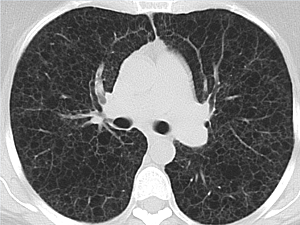Respiratory infections are common in patients with lymphangioleiomyomatosis (LAM), a rare progressive cystic lung disease that principally affects young women. These infections are frequent irrespective of treatment, which suggests a dysregulated pulmonary microbiome.
Souheil Y. El-Chemaly, MD, clinical director of the Center for LAM Research and Clinical Care at Brigham and Women’s Hospital, Julie Ng, MD, a pulmonologist in the Division of Pulmonary and Critical Care Medicine, and colleagues conducted the first study to examine the lung microbiome of patients with LAM who were at high risk of disease progression or death.
In a letter to the editor of Respiratory Research, they report a distinct microbial signature in patients with end-stage LAM compared to patients with end-stage chronic obstructive pulmonary disease (COPD).
Methods
The researchers obtained 25 lung tissue specimens from women who had required lung transplantation because of their disease (LAM=15, COPD=10). Samples with >1,000 ribosomal RNA sequencing reads (LAM=12, COPD=9) were taken forward into analyses.
Key Results
Evaluation of the pulmonary microbiome in the two patient populations revealed substantial differences in microbial community structure:
- Evenness (the relative amounts of each species present in the lung) was lower in patients with end-stage LAM than in those with end-stage COPD (P=0.058)
- Microbial species diversity (both the abundance and richness of the microbial community) was significantly lower in patients with end-stage LAM
The number of distinct species did not differ between disease states. However, there were differences in the species identified:
- Of the top 10 bacteria (by average rank abundance), only one organism, Streptococcus, appeared in both patient populations
- Staphylococcus and Pseudomonas were relatively more abundant in patients with COPD
- Acinetobacter predominated in patients with LAM
Conclusions
The pulmonary microbiome may represent a previously unrecognized—and potentially modifiable—marker of patients with LAM who are at especially high risk of decline in respiratory function.
As reported previously in Respiratory Research, Acinetobacter has been observed in the lung microbiome of lung transplant recipients. In addition to infections, immunomodulation may play a role in shaping the microbiome of patients with LAM.
